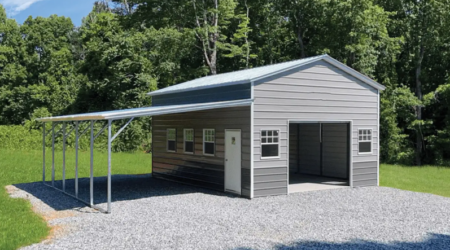The Cost and Durability of Concrete Rendering
Rendering Perth acts as a protective layer for brick and other masonry structures. It can also be used to improve the appearance of a building. It is best used in conjunction with external wall insulation.
It is susceptible to cracking and deterioration over time. Preparing the walls correctly and using the right mix ratios is important.

There are several factors that can influence the cost of concrete rendering. First, it depends on the company you use. Small one-man type traders have lower overheads than larger firms, and this can dramatically affect the price. These smaller businesses don’t have to pay for advertising, office staff and company directors, so they can offer a much cheaper service.
The type of render chosen will also impact the cost. Smooth rendering is generally cheaper than a pebbledash finish, but this can depend on the condition of the walls and the level of preparation required to achieve the final result. The wall may need to be cleaned of any dirt and debris before the render is applied. In addition, the wall will need to be reinforced in some places to reduce the risk of cracking.
Rendering is a great way to protect your home from weather damage and add a new aesthetic to your property. Whether you opt for a traditional cement or an acrylic solution, rendering will last a long time. Unlike plaster, it will not rot or attract algae. If you choose to go for a more modern option, acrylic rendering can also provide an additional layer of insulation and a better finish.
Cement rendering is usually charged by the square meter and can range from $30 to $50 per m2. It’s important to understand how these prices are determined so you can make the best decision for your needs. If you opt for a high quality cement render, you can expect to pay closer to the $20,000 mark. This price is likely for large jobs and will be a reflection of the rendering company’s reputation and portfolio.
A traditional sand and cement render costs PS30 – PS80/m2 (of wall area). This includes painting. Scaffolding is also included in this price. For example, a three-bedroom semi-detached house with a side gable will cost in the region of PS2,700 – PS7,200 for all rendering and scaffolding costs. It is a good idea to allow an extra week for the job and to factor in skip hire costs, labour and VAT.
The durability of a render is a critical factor in the overall performance of exterior cladding. It provides the first line of defense against degradation agents and plays a decisive role in the water-tightness, thermal insulation, and masonry protection of the structure. To determine the durability of a render, a number of tests are performed. These include freeze/thaw cycles, compressive strength, and hygrothermal testing. To ensure the results of these tests are accurate, the samples are weighed after each cycle. The variation in weight is calculated as a percentage of the initial value. The variation in weight must be less than 30%.
The longevity of render can be affected by a number of factors, including the type of rendering material and the weather conditions during application. It is also important to keep in mind that the render must be protected from rain and sunlight during its curing process. In addition, regular maintenance and cleaning is essential to preserve its appearance and functionality.
Renders can be applied to a variety of surfaces, including brick, stone, and concrete walls. They are commonly used to protect brickwork from the elements and can be painted any colour for aesthetic purposes. They can also provide insulation and help to keep homes more comfortable during the winter. Render is also a good choice for timber frame walls, which are more flexible than brick and blockwork.
There are many different types of render, and each has its own advantages and disadvantages. Some are more expensive than others, and some may need to be replaced after a certain amount of time. However, if the render is well maintained and cared for, it can last for decades.
Cement render is a popular option for homes and commercial buildings. It’s easy to apply and can be painted to match any color scheme. It’s also highly durable and resistant to weathering. However, it’s best to use a professional for installation, as the wrong technique can result in cracking and staining. Moreover, it’s best to avoid using a sand and cement render on timber frames, as this can crack over time.
Cement rendering is a cost-effective way to give your home a modern makeover. It can increase the value of your property and improve its appearance. It can also protect against weather damage and offer a degree of insulation. However, it is important to understand the different types of rendering before making a decision.
Rendering is a process where a premixed coating of lime, sand, and cement is applied to walls and fences. It can be painted, textured, or left as a natural finish. It is generally a more labor-intensive option than other options, but it offers many advantages, including its ability to provide strength and insulation for brick and other masonry surfaces.
The flexibility of cement render can be increased by adding polyvinyl alcohol fibers and fine silica sand to the mixture. These additives help reduce cracking and increase the durability of the concrete. The mix can also be augmented with other fibers, such as glass, steel, and asbestos. The addition of these materials helps the concrete to flex without damaging the surface.
Another way to increase the flexibility of your concrete rendering is to use a latex bond in the mix. This bond acts as a flexible sealant, preventing water from penetrating the wall and reducing the likelihood of cracking. The bond is injected into the render before application, so it will be more durable than an untreated rendering.
A good quality render can last up to 25 years or more, depending on the condition of your wall. However, it is important to keep in mind that the life expectancy of your render is heavily dependent on the skills and expertise of the applicator, the sand and cement used, and the specific environmental conditions in your area.
Although render can be applied DIY, it is recommended that you work with a professional. This will ensure that the walls are properly prepared and that the render is mixed in the correct ratio. It is also crucial to ensure that the render is allowed to dry completely before painting. If you are concerned about the impact that rendering may have on the environment, there are other options available, such as acrylic and silicone renders.
Concrete is a porous material that absorbs and changes color with time, especially when exposed to the elements. Luckily, there are many ways to change its appearance without compromising the integrity of your concrete slabs. Colouring your concrete can add value to your property and make it stand out in the neighbourhood. You can use paint to achieve the look you desire, or you can opt for a more permanent solution such as integral concrete dyes.
Integral concrete dyes are made from oxides that are mixed in with the concrete itself while it’s still wet. This technique makes the concrete stronger and more resistant to damage. It also helps the color to stay bright over time, and it’s highly resistant to fading from sunlight. However, it’s important to note that the coloring will not last as long as a paint coating.
The primary advantage of colored render is its low-maintenance nature. Unlike traditional renders, which require frequent repainting, colored render is pigmented all the way through, eliminating the need for additional coats. In addition, colored render is algae-resistant and water-resistant. Depending on the type of colored render you choose, it may even be fortified with polymers during manufacturing, further enhancing its durability.
It’s also worth noting that a painted rendering is easier to repair and strip than an existing concrete structure. Nevertheless, it’s important to seek personalized advice from experienced professionals to ensure that the information you receive aligns with your specific property and requirements.
While trends can influence your initial colour choices, choosing a colour that’s suited to your vision will help your property stand out in the community and enhance its long-term appeal. Colored renders are also easy to strip and repaint if you ever decide to change your style or aesthetic.
If you’re looking for a more permanent solution, consider colored renders that incorporate an integral dye during the manufacturing process. This type of render is known as a through-coloured render and offers multiple benefits, including a more natural finish and added weather protection. It’s also a great choice for people who are allergic to chemicals or who want to protect the environment.


